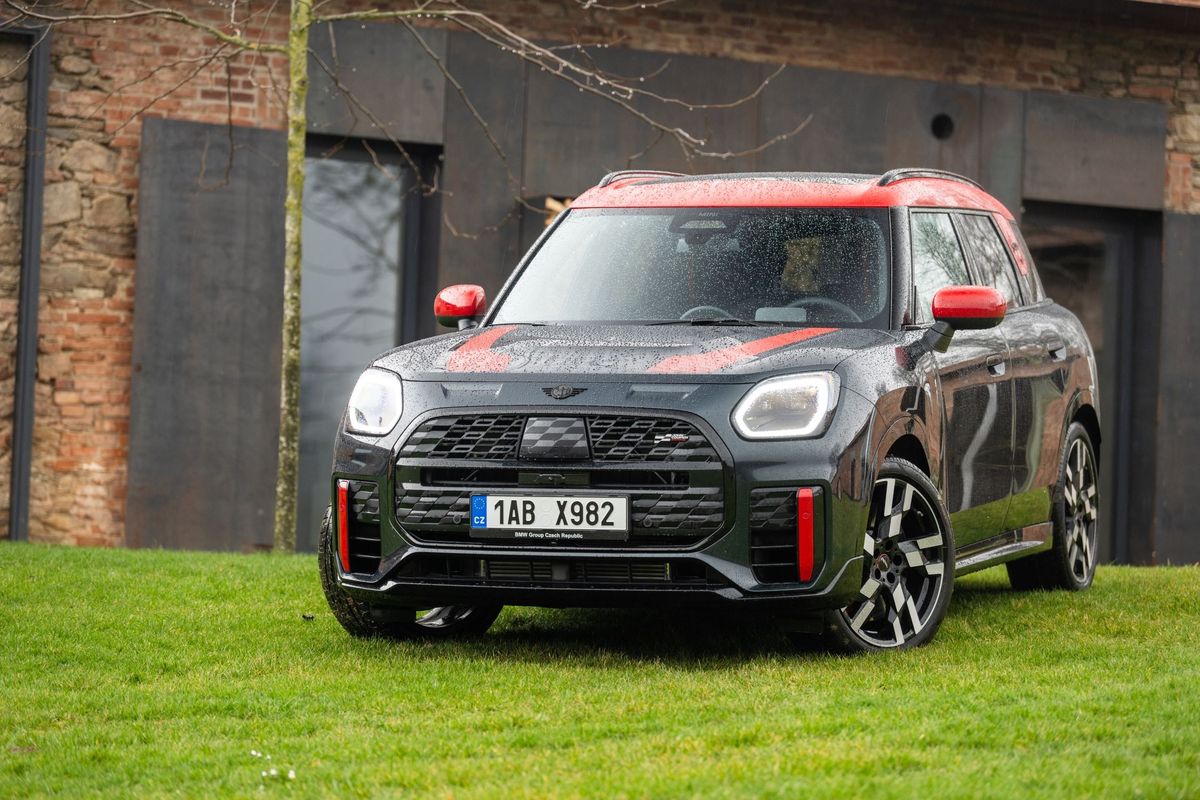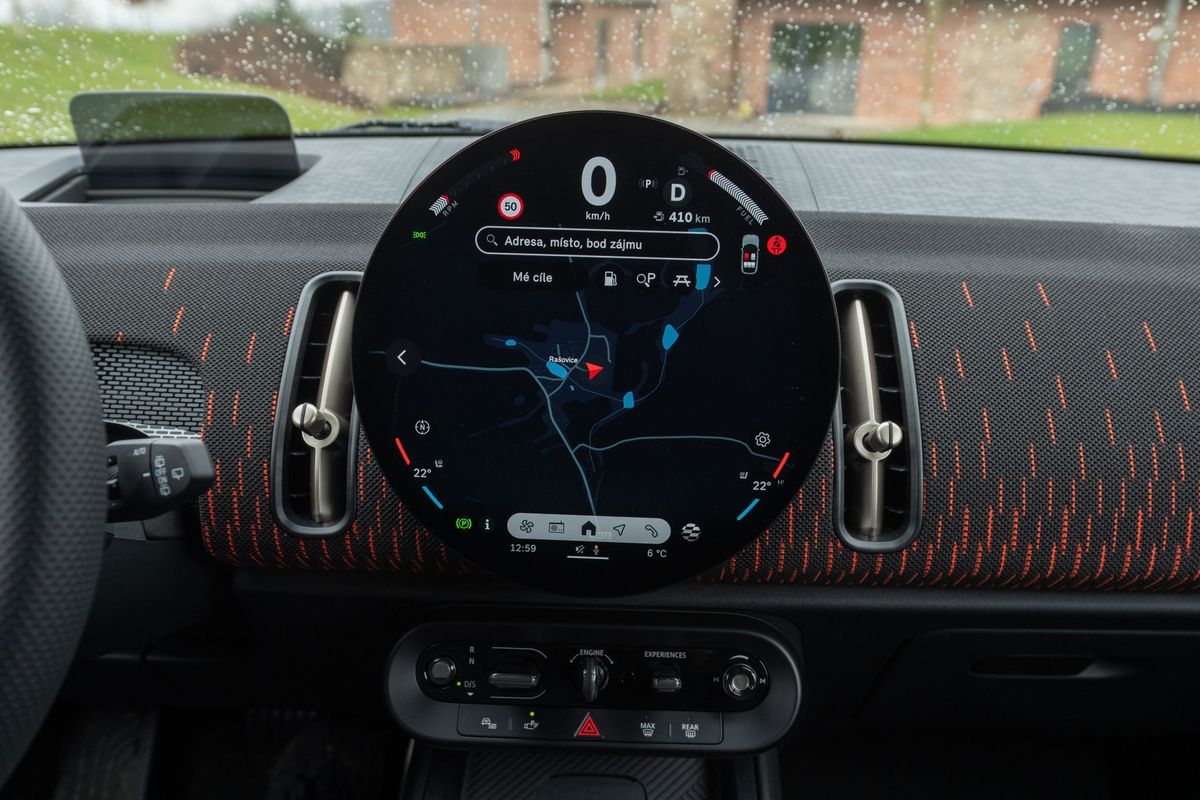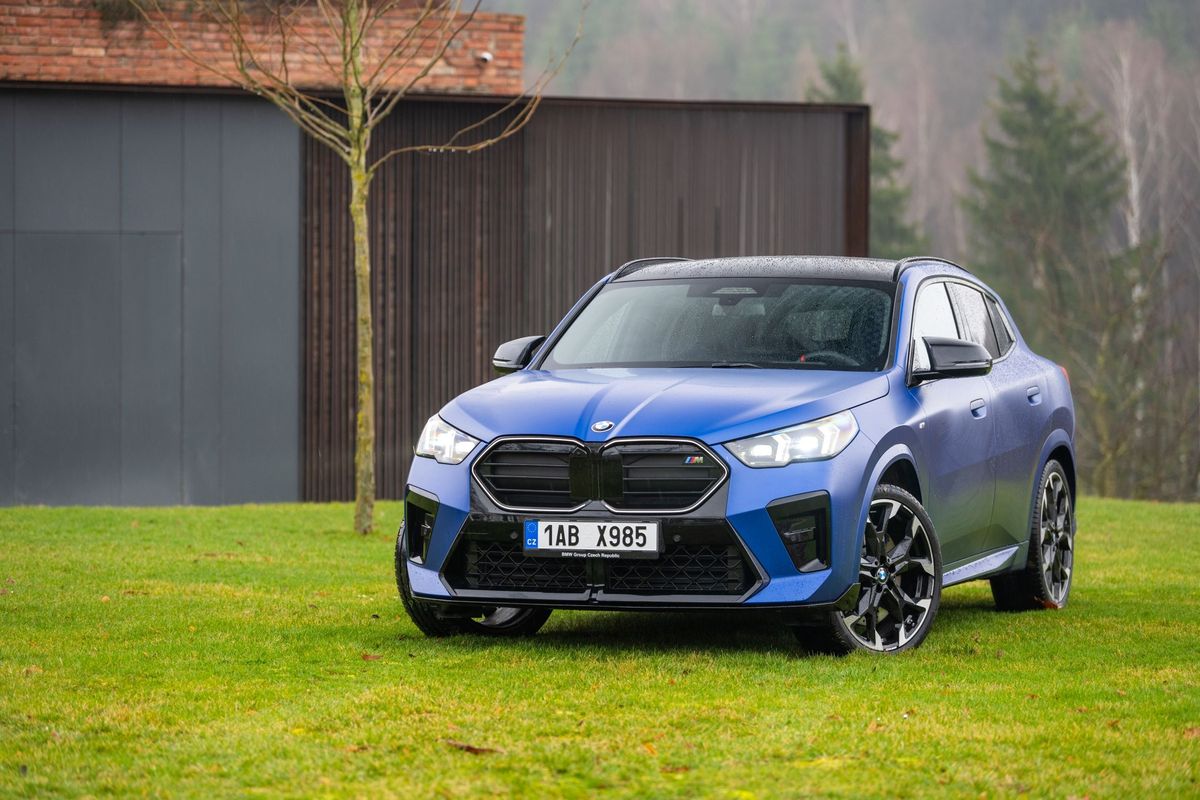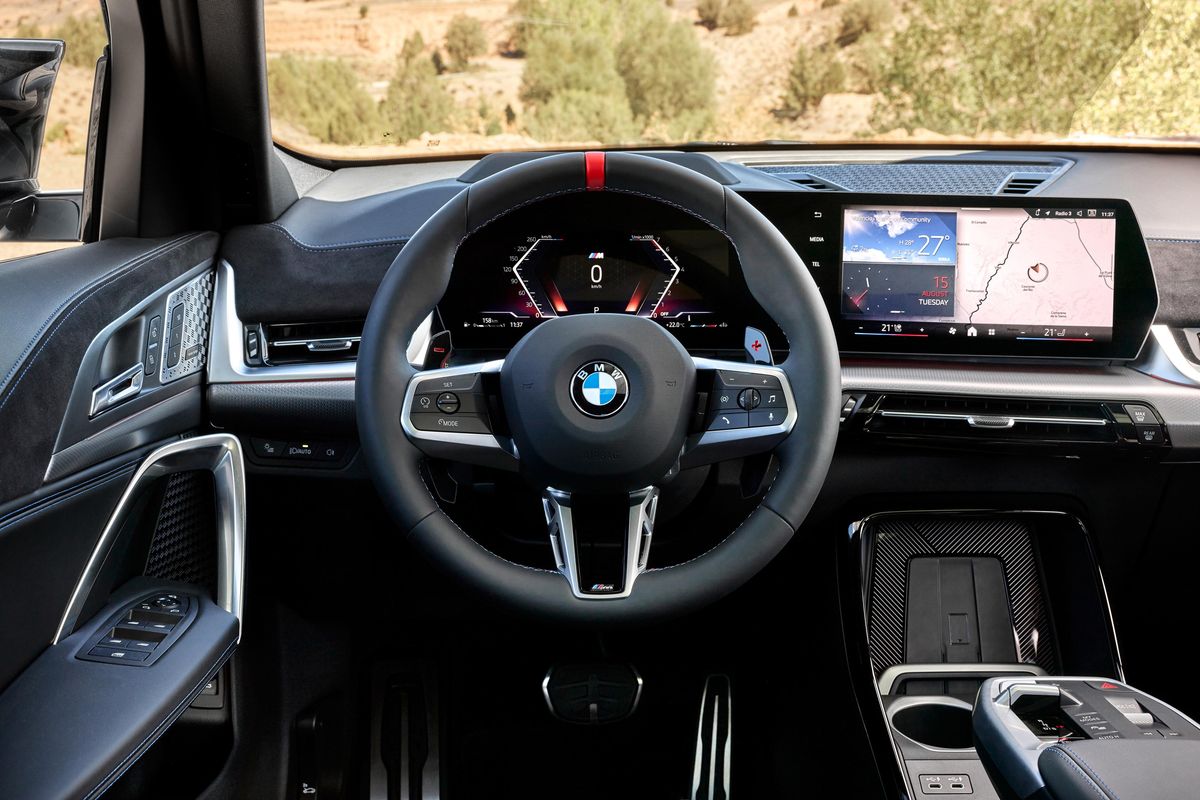The dynamic presentation of both German novelties began in Prague and headed for southern Bohemia. Yes, I’m really writing German, because despite the brand’s British origins, the Countryman is completely produced in Leipzig, Germany in its current third generation (as the first Mini ever). We were able to get to know both novelties on a long journey not only in Prague traffic, but also on the highway, main road and winding districts with many turns.
Mini Countryman
The new Countryman is already very large (the first generation would look like a crumb next to it) and the former curves have been replaced by much more angular shapes. But thanks to its larger dimensions, the Mini comfortably accommodates four adult passengers.

Photo: BMW
Compared to its predecessor, the new Countryman grew by a considerable 13 cm in length and 6 cm in height.
The dashboard is enthroned by a large circular display, which is meant to resemble the central alarm clock in the original Minis from the sixties. Below it is a projector that can illuminate the entire deck. At the top you will find a head-up display projected onto a glass, but it is a bit low – even if I have an ideal posture (the seat is still quite high even in the lowest position), I have to lower my eyes to it.

Photo: BMW
They are really proud of the new circular display with a diameter of 9.44 inches without a frame in Mini.
You will notice the display at first glance, but the system of ones and zeros that drives it is also new. Infotainment is already in its ninth generation in both cars and is this time based on Android. So you can download new applications directly to it, and the graphics have also improved significantly. The display offers many display options and many animations including a spinning vinyl record while playing music. Mini has also recorded completely new sound alerts for the car.

Photo: BMW
The rear part has grown properly, so the Countryman is already a decently practical family car.
Sustainability is a big theme for Mini, so the interior upholstery is made from recycled materials and even the attractive wheels are largely made of alloy, the material of which was used by retired cast wheels. The seats don’t look particularly ergonomic, but the lateral guidance still works well enough. But the start will punish us a bit. We are looking for a classic button for a while before we notice the rotating knob. It looks like an inserted key, and with the same turning movement, the engine actually wakes up with it. It’s effective, but I’d probably stick with a regular button here.

Photo: BMW
The inclinations are not very pronounced, so the Countryman seems confident in the corners.
The top variant of the John Cooper Works uses a four-cylinder two-liter with a turbocharger and boasts an output of 300 horsepower (221 kW) and a torque of 400 Nm. It accelerates to 100 km/h in a very brisk 5.4 seconds and the maximum speed is limited to 250 km/h. All variants have a seven-speed ZF automatic. However, its reactions are not immediate, even during kick-down, as if the car hesitated for a moment and forced you to switch to the sports mode, which is called Go Kart. In heavy freeway traffic, it is therefore not a matter of course to get into a gap in the next lane.

Photo: BMW
With a longer wheelbase, the Mini is more stable even at higher speeds.
The JCW chassis is pleasantly stiff but still sufficiently filters out bumps. Sound insulation is also very well managed. The steering is not bad, but it seems quite aloof and insensitive, and in addition, at higher speeds, the car pulls unexpectedly hard on the steering wheel. This is also partly due to the thick rim of the small multifunction steering wheel. The Countryman won’t be for true sports driving enthusiasts, but they probably don’t expect that from a Mini in the case of a crossover. At a base price of 1,261,000 crowns, this version will most likely find a buyer among those interested in a very stylish yet practical car.

Photo: BMW
With the departure from round shapes, the originality of the modern Mini may be fading a little, don’t you think? But the design of the Countryman was largely dictated by aerodynamics in favor of the range of the electric version.
We were also able to briefly test the Countryman C with a mild-hybrid three-cylinder fifteen-cylinder engine driving only the front wheels (it starts at a price tag of 874,900 crowns). Of course, the engine noticeably lacks power compared to the JCW (it has only 125 kW / 170 hp, while 15 kW is the power of the electric motor), but thanks to the electric assistance, this version reacts a lot faster when pressing the gas. In addition, it retained the same confident driving characteristics. Cornering lean is slightly larger, but still very subdued, and overall the Countryman feels very neutral. You will also not find the aforementioned pulling the steering wheel of the JCW version here.
But thanks to its tuning, the regular Countryman is at least a bit more comfortable and you feel much less potholes and bumps in it, even on a very low-quality circuit. The torque of 280 Nm is available in a wide range of 1,500 to 4,400 rpm, so the engine does not lack flexibility. The sound reduction of the engine is very pleasant, which is almost inaudible here – you don’t even know that there is a three-cylinder engine under the hood. Those interested in diesel will also get their money’s worth, they just have to prepare at least 961,999 crowns. In addition to the mentioned versions, the electric Countryman E will soon arrive on the market, and its base price will be a fairly favorable 999,700 crowns.

Photo: BMW
The M35i version was shown to us in the pleasing Frosted Portimao Blue matte paint. However, the surcharge for it is 73,710 crowns.
BMW X2
For the return trip, we got the BMW X2 M35i, i.e. the top gasoline version of the new stylish crossover with the same parameters as the Countryman John Cooper Works (300 hp and 400 Nm). While the previous X2 was smaller than the more practical X1, the current generation is directly derived from it and thus has grown in all directions between generations. The X2 model is 54 millimeters longer than the X1, but only in the rear overhang. You may not have expected a successor, but 390,000 units sold in 5 years have convinced the automaker that it deserves one.

Photo: BMW
The X2 also looks impressive from behind, although some may not like the new shape of the lights.
It boasts a more aggressive design inspired by the larger X6 and XM models, Iconic Glow backlit kidney stones, a negatively inclined shark nose and, in this version, very nice accessories from the M package, including a Gurney rear spoiler. The small crossover stands on twenty-one-inch wheels, but the base has nineteen-inch wheels. Eighteen-inch wheels can also have weaker engines.

Photo: BMW
The interior of the X2 is completely identical to the X1. This means a surprising amount of space and practicality spiced up with a good portion of modern digitization.
Inside, there’s an otherwise more luxurious-looking cabin with a digital instrument panel (its screen is 10.25 inches) and a central touchscreen infotainment system with a 10.7-inch touchscreen. The steering wheel is round and has a rim of the correct diameter and thickness. The seats have a fantastic shape and boast an illuminated logo of the M division. Since the overall length of the X2 has been extended by 194 millimeters, there is more space for passengers in the second row of seats. The luggage compartment also has a respectable 560 liters, in the case of hybrid versions a slightly smaller 525 liters.

Photo: BMW
We expected a ride similar to the Countryman, but the X2 drives even better.
But we were more interested in the ride anyway, although we didn’t expect a big difference from the Countryman. However, the BMW is even better to drive and will be particularly pleased with its more precise and sensitive steering and better noise reduction. Of course, you’ll never get rid of the higher center of gravity, but the BMW sits better in corners and bounces a lot less over bumps. The automatic seven-speed Steptronic gearbox is also tuned more precisely, which works here without any delay, so I practically have no need to use the paddles under the steering wheel.

Photo: BMW
The price of the M35i xDrive version starts at 1,466,400 crowns, so you have to pay extra for a better ride. After all, there’s no way you’ll get below a million. Even the basic X2 sDrive20i costs 1,041,300 crowns. The diesel version of the sDrive 18d starts at 1,051,700 crowns, and the cheapest electric car iX2 costs 1,384,500 crowns.
That is not enough, but those interested in a stylish crossover with a low silhouette (yes, I avoid the label SUV-coupe like hell), which can also offer pleasant driving characteristics, do not have much choice. And since the first generation also found a lot of interested parties, the second generation has a good footing to ride on the same wave.



